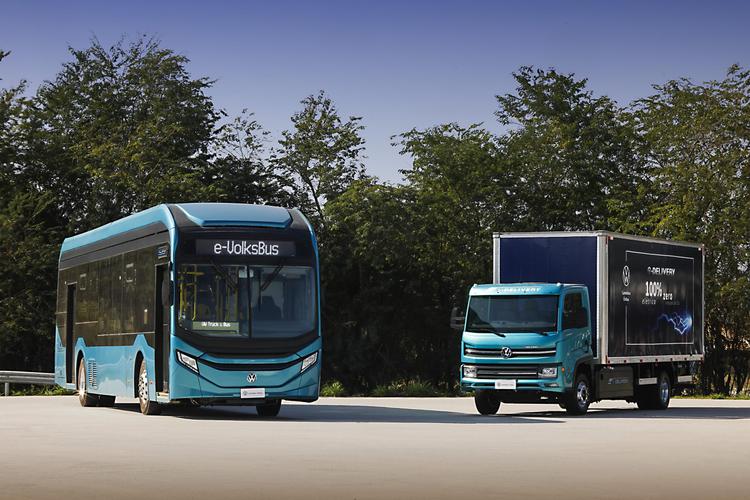6 mins to read
CESAR .
Publicado em: 05 de setembro de 2025
Petrobras: The Award-Winning Digital Twin Project to Ensure Operational Efficiency and Safety

Multi-layered structures, designed with flexibility and resistance to withstand harsh marine conditions, transport oil, gas, and other fluids from equipment installed on the seabed to the platform on the surface, about two thousand meters away. Flexible pipes are the most commonly used in the extraction carried out in Brazil’s Pre-Salt fields, with Petrobras operating extensive networks stretching for kilometers. These structures require constant inspection and maintenance, and sometimes even costly replacements, to ensure efficiency and operational safety. After all, any damage could result in financial and environmental consequences.
Also known as risers or flowlines, flexible pipes symbolize the challenging environment of the oil industry. Monitoring them to maximize their lifespan is essential. To achieve this, Petrobras found in CESAR the ideal partner to implement a disruptive technology capable of interpreting, analyzing, learning, and suggesting actions based on data processed from both real operations and simulation models. This is the Digital Twin—a virtual replica of a physical system, object, or business process. The innovative project also involved professionals and researchers from the Federal University of Rio de Janeiro (UFRJ) and promises to revolutionize the sector. The awards it has received so far support this forecast.
What Are Digital Twins?
Unlike simulators such as those NASA used to train astronauts 50 years ago, or the automotive and aviation simulators of the 1990s that tested products virtually before prototyping and real testing, a digital twin is updated almost in real time. This is possible thanks to continuous data input from the physical environment, which also enables digital operations that directly influence real-world counterparts.
“The implementation of digital twins was made possible by the consolidation of technologies such as the Internet of Things, artificial intelligence, cloud computing, 5G, and augmented and virtual reality. This technology can also be understood as a system of systems, bringing together various vertical solutions that operate in isolation in a given environment. It integrates data from all systems, enabling optimization and operation by correlating all that information,” explains Benedito Macedo, CESAR’s Executive Director.
Solutions for Petrobras’ Challenge
The Santos, Búzios, Campos, and Espírito Santo basins are the Petrobras units where the digital twin was deployed to monitor the lifespan of flexible pipes. To achieve this, the FLEXBOARD tool was developed—managing, orchestrating, executing, and publishing the results of digital models processed in real time. FLEXBOARD integrates multiple databases and engineering simulators developed by Petrobras.
Technology to Enhance Safety and Efficiency
The presence of carbon dioxide (CO₂) inside the metallic layers of flexible pipes, combined with water, can trigger a corrosive process that significantly reduces their lifespan. Known as SCC (Stress Corrosion Cracking), this phenomenon poses both economic and environmental risks to oil production in Brazil’s Pre-Salt.
The Digital Twin project enables real-time monitoring of CO₂ corrosion, empowering Petrobras’ integrity engineers to make data-driven decisions to optimize production and maximize operational efficiency. The tool leverages field sensors to feed a severity and remaining-life analysis model, providing a complete view of the most critical pipes and supporting decision-making to ensure safe operations.
George Campello, Petrobras engineer and Digital Twin project coordinator, explains: “This disruptive technology, aligned with our vision of the future, increases efficiency and safety while also contributing to CO₂ emissions reduction. It recognizes the remarkable work of our team and our external partners, CESAR and LACEO (UFRJ).”
Flexible pipes are designed for medium to long-term use. However, beyond SCC, their lifespan can also be shortened by fatigue in traction wires and metallic layers caused by cyclical loads induced by offshore platform movement. Among the benefits of the Digital Twin, highlights include:
- Automatically predicting the remaining lifespan of pipes based on real operating conditions;
- Preventing risks of accidents, both environmental and personnel-related;
- Reducing production losses caused by unavailable or expired pipes;
- Maximizing pipe use and avoiding unnecessary replacements, as their fabrication and installation costs run into millions.
International Recognition
In the past semester, the Digital Twin won the Society of Petroleum Engineers (SPE) Award and was a finalist at the ANP Technological Innovation Award. The ANP recognition highlights R&D projects that enhance operational efficiency in the sector.
The SPE Awards annually honor individuals and companies worldwide for outstanding achievements in offshore E&P. The Digital Twin won in the category “Best R&D Project in the Last 3 Years.” This recognition underscores the collective work of the multidisciplinary team behind this groundbreaking technology.

“This innovation demonstrates our commitment to developing technological solutions that positively impact the energy sector. Real-time monitoring of flexible pipes is essential to ensure the integrity of oil operations, fostering a more efficient and safer industry,” emphasizes Eduardo Peixoto, CEO of CESAR.
The Business Impact of Digital Twins
Investment forecasts for digital twins in the coming years are highly optimistic. According to MarketsandMarkets, the global digital twin market will grow dramatically from US$6.9 billion to US$73.5 billion between 2022 and 2027. Such substantial investments are driven by the technology’s wide-ranging applications—from asset monitoring, production optimization, and maintenance management to the development of new products and innovative business models.
“In the context of major urban regions, we could create a digital twin of an entire city—bringing together existing systems such as urban traffic, water supply, power grids, connectivity, surveillance cameras, and weather or flood sensors. With all this integrated data, city services, traffic management, last-mile logistics, public resource allocation, and even real-time simulations for climate events could be better managed,” says CESAR’s Benedito Macedo.
Get to know more about the solution:
Digital twins stand out due to their richness of detail, immense data fidelity, immersive simulations, and the maturity of IT infrastructures supporting them.
“The use of digital twins can generate tangible value for companies, boosting competitiveness, reducing costs, creating new business models, and supporting decision-making with fewer risks and lower field-testing expenses. And as the technology evolves, we can expect broader adoption and new applications across industries,” concludes Benedito.
If your organization needs specialized support in research, design, and innovation, get in touch with CESAR to leverage hundreds of software architects, developers, designers, researchers, UX specialists, and innovation project managers. Click here to speak with one of our consultants.
You may also like

CAIXA: Agências Inteligentes para Inclusão digital e acessibilidade financeira de povos indígenas

Da Amazônia para o mundo: conheça a solução de auditoria inteligente da LG com o CESAR

Petrobras: Como transformar dados complexos em ação – o projeto de visualização do G20

